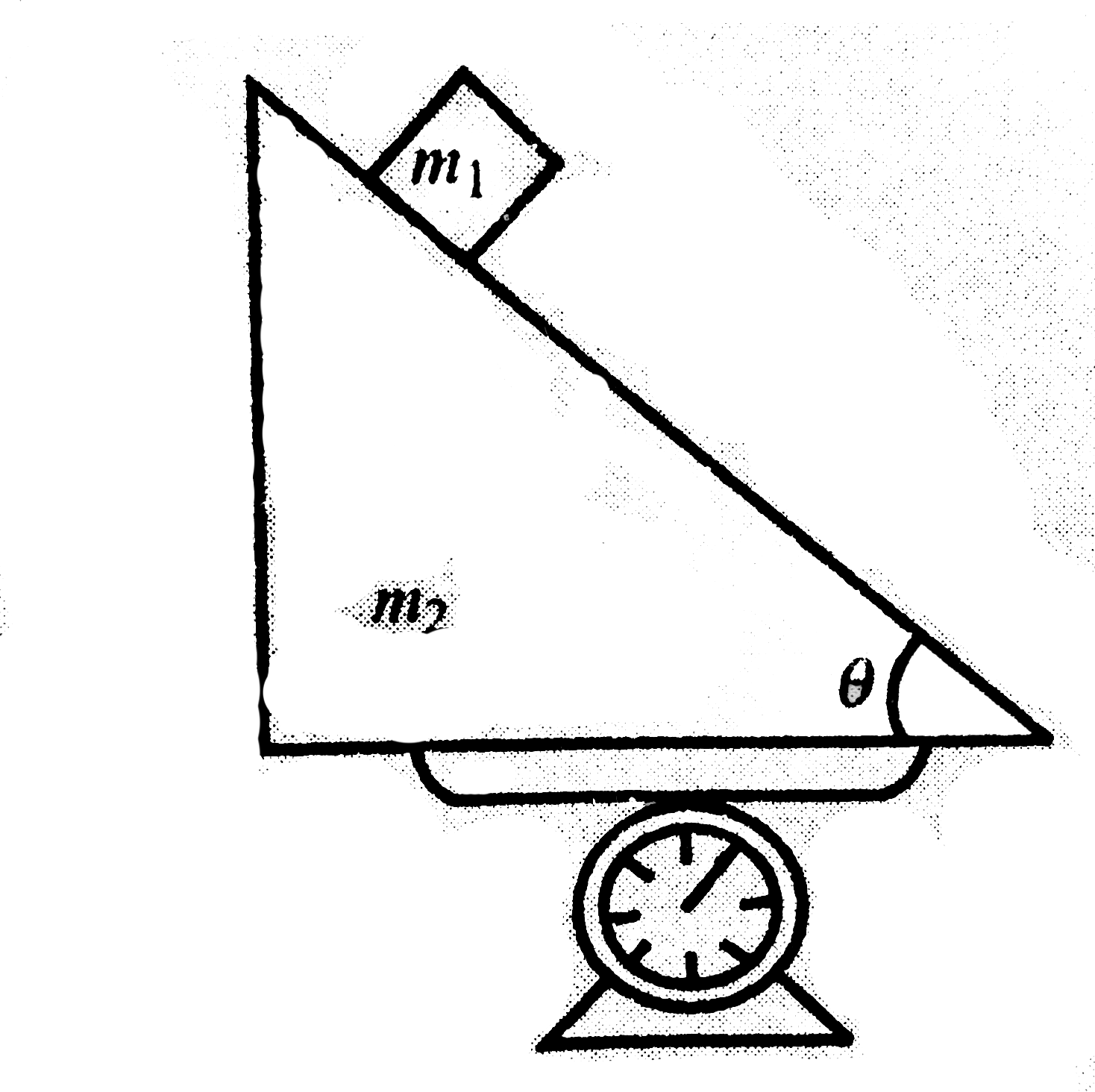A wedge of mass m1 with its upper surface hemispherical in shape, as shown in Fig. 4E.7(a), rests on a smooth horizontal surface near the wall. A small block of mass m2 slides without friction on the hemispherical surface of the wedge. What is the maximum velocity attained by the wedge ?

Step by step video & image solution for A wedge of mass m_1 with its upper surface hemispherical in shape, as shown in Fig. 4E.7(a), rests on a smooth horizontal surface near the wall. A small block of mass m_2 slides without friction on the hemispherical surface of the wedge. What is the maximum velocity attained by the wedge ? by Physics experts to help you in doubts & scoring excellent marks in Class 12 exams.
Updated on:21/07/2023Topper's Solved these Questions
Similar Questions
A wedge of mass m1 with its upper surface hemispherical in shape, as shown in Fig. 4E. 7 (a), rests on a smooth horizontal. surface near thewall. A small block of mass m2 slides without friction on the hemispherical surface of the wedge. What is the 'maxi.mum velocity attained by the wedge ?

View SolutionA smooth wedge of mass M rests on a smooth horizontal surface. A block of mass m is projected from its lowermost point with velocity v0. What is the maximum height reached by the block?

View Solution
Knowledge Check
All surfaces are smooth. The acceleration of mass m relative to the wedge is
 AgsinθBgsinθ+acosθCgsinθ−acosθDacosθ
AgsinθBgsinθ+acosθCgsinθ−acosθDacosθAll surfaces are smooth The acceleration of mass m relative to the wedge is
 .AgsinθBgsinθ+acosθCgsinθ−acosθDacosθ
.AgsinθBgsinθ+acosθCgsinθ−acosθDacosθA block of mass 2 kg is kept on a smooth wedge of mass 3 kg and wedge is kept on a rough horizontal surface. A vertical force of 60 N is applied on the minimum coefficient of friction between the wedge and horizontal surface, so that wedge remains at rest during the motion of block on the wedge ?
 A2/7B4/7C6/7D2/5
A2/7B4/7C6/7D2/5
A block of mass m is placed at rest on a smooth wedge of mass M placed at rest on a smooth horizontal surface. As the system is released

View SolutionA wedge of mass M makes an angle θ with the horizontal. The wedge is placed on horizontal frictionless surface. A small block of mass m is placed on the inclined surface of wedge. What horizontal force F must be applied to the wedge so that the force of friction between the block and wedge is zero ?
View SolutionA block of mass m is at rest over the rough surface of the fixed wedge.


View SolutionA wedge of mass m2 is kept on a spring balance. A small block of mass m1 can move along the frictionless incline of the wedge. What is the reading of the balance while the block slides? Ignore the recoil of the wedge.

View SolutionA small block of mass m is placed at rest on the top of a smooth wedge of mass M, which in turn is placed at rest on a smooth horizontal surface as shown in figure. It h be the height of wedge and θ is the inclination, then the distance moved by the wedge as the block reaches the foot of the wedge is

View Solution